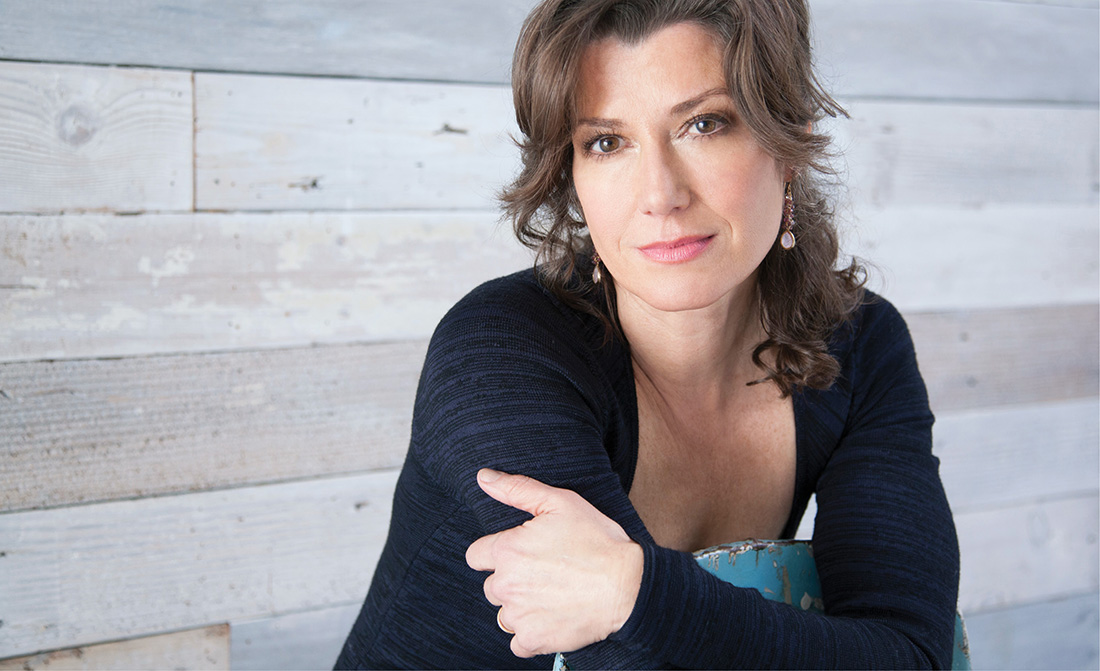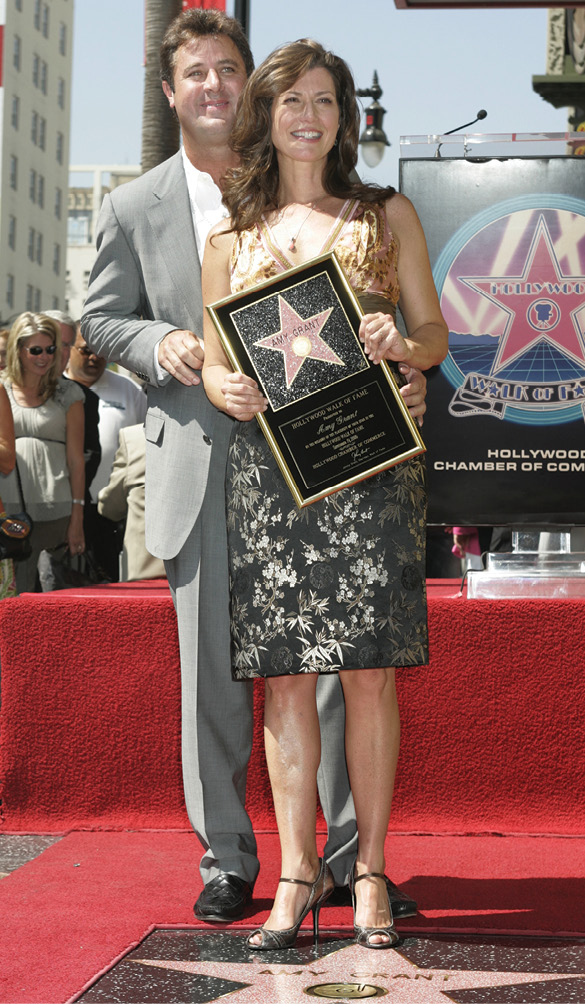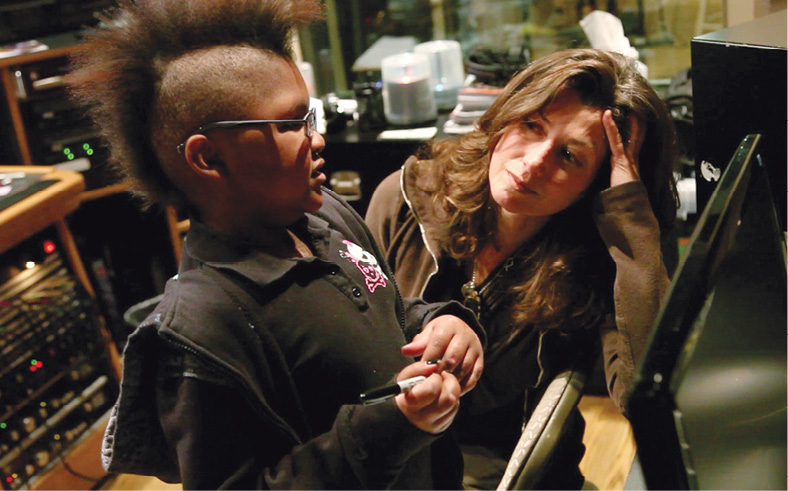
Amy Grant’s music defies easy classification. She is known as much for being the fresh-faced singer–songwriter who defined the contemporary Christian music scene in the ’80s as she is the curly coiffed pop star who won a legion of fans among the MTV generation a decade later. And that doesn’t even take into account her more recent success crafting insightful songs across a range of genres, from folk to gospel to country and pop.
The truth is there are many sides to Grant, and nearly 40 years into her career as a recording artist, her music continues to delight listeners in unexpected ways. In fact, her latest effort, this year’s In Motion: The Remixes, may be her most unusual release to date. It’s, of all things, a collection of her previous pop and Christian hits reimagined—with the help of some of the best DJs in the business—as electronic dance music. The remix of her No. 1 pop hit from 1991, “Baby, Baby,” debuted at the No. 1 Breakout spot on Billboard’s Hot Dance Club Play chart in July, and the album reached No. 5 on the U.S. Dance Album chart.
“This latest project really came about because I listened to some longtime fans,” Grant says. “For me it really has less to do with having a master game plan and more with just enjoying a sense of creative community. If being part of a songwriter town like Nashville teaches you anything, it’s that you never know where the next idea’s going to come from.”
In short, Grant’s music is like a prism: multifaceted and capable of dazzling surprises at every turn. And just as with a prism, there’s something transformative about the way her music reveals its source of illumination. Her light, so to speak, comes not only from an abiding faith in God but from a belief in humanity’s goodness as well, and that feeling of connection to others is inspiring in and of itself.
“Music is best experienced together,” she says. “That’s what’s so phenomenal about pursuing a career in it because the sum is so much bigger than the individual parts. It’s a soul-enlarging experience.”
Of course, in this instance Grant could just as easily be talking about life in a broader sense. Like music, it is best experienced in the company of others and is soul-enlarging in its own way. As Grant figures it, there’s no greater blessing than being part of a community that cares, and the least she can do is take the light she has been given and shine it toward those who need it most.
A LEGACY TO REMEMBER
Grant was just 15 when a record executive signed her to her first professional recording contract, but at the time it didn’t feel like the beginning of a career to her. Even after the release of her third studio album in 1980—the same year she transferred from Furman University to Vanderbilt—Grant still wasn’t convinced she would pursue music for a living. That doubt, though, would disappear soon enough.
While majoring in English during her junior and senior years, she continued to write and record songs, working on what would become her fourth studio album, Age to Age. Released in early 1982, the album not only changed Grant’s life forever but permanently transformed the Christian music industry as well. Featuring the hit “El Shaddai,” Age to Age would go on to sell more than 1 million copies, becoming the first-ever Christian album to be certified platinum.
“I kept telling myself that I had to get a real job,” she says about the months leading up to graduation. “Then the record took off, and I said, ‘Whoa, I guess this is what I’m doing.’”
Age to Age was so successful that Grant decided to leave Vanderbilt just a few credits shy of earning her degree. In retrospect she feels bittersweet about the sacrifices she had to make for her music, including withdrawing early from school, but there’s no second-guessing the decision.

“I think everything turned out just fine,” she says with a laugh. “I’m sure I missed out on some fun things in college, but I got to do a lot of other fun things, too.”
Fortunately, Grant was able to keep her sudden rise to fame in perspective thanks to the steady support of those around her. She credits her father, Dr. Burton Grant, ’53, a radiologist and longtime assistant clinical professor at Vanderbilt, and mother, Gloria, with helping her stay grounded. She also points to the influence of her childhood church, Ashwood Church of Christ in Nashville. Ashwood is where music, faith and community first coalesced for her, and some of her favorite memories involve singing hymns in the pew alongside her great-grandmother Lillie Burton.
“Specifically, I remember being down front on the row where they had all the devices for the hearing impaired,” Grant says. “My great-grandmother had a beautiful voice, and because she was a tiny woman, and more or less my height, I could hear her really well.”
Tiny though she was, Lillie Burton looms large in Grant’s imagination. An early song Grant wrote titled “Mimi’s House” recounts the happy times spent on the sprawling farm that Lillie and her husband, A.M. Burton, owned just south of downtown Nashville. (Today the property is the site of the Burton Hills neighborhood and business complex in the Green Hills area.)
Grant didn’t know her great-grandfather well—she was only 5 when he passed away—but that hasn’t lessened her appreciation for what he accomplished during his lifetime. The founder of Life and Casualty Insurance Co. of Tennessee, A.M. constructed the 31-story L&C Tower, Nashville’s first skyscraper and, at the time of its completion in 1957, the tallest building in the Southeast. It remains a prominent landmark on the Nashville skyline. He also happened to be a notable philanthropist who gave back generously to the community.
“Growing up I knew very little about what he had done,” Grant says. “It takes some kind of massive legacy for people to remember anybody. That’s why we name buildings for people. All those things are important because there’s no way the next generation is going to know. You have to have a reason to keep telling the story, even if it’s diluted.”
When it comes to her own legacy, Grant could list any number of successes: the 27 albums released, the more than 30 million copies sold, the six Grammy Awards and 26 Dove Awards, and her star on the Hollywood Walk of Fame, among others. These accomplishments, however, tell only part of the story—and as she likes to point out, there’s no guarantee any of them will be remembered in the years to come.
“Who knows what will last?” she says. “In any field, how quickly we forget who’s gone before and who’s done what.”
But what does endure, Grant argues, is the goodwill that one creates during a lifetime. Simple acts of kindness can make a profound difference in people’s lives—not just for those on the receiving end but for the givers, too—and to remind herself of this, she recites a short prayer every day: “Lord, lead me today to those I need and to those who need me, and let something I do have eternal significance. Amen.”
“I think what we say has so much more power than any of us realizes,” she says. “When I recite that prayer, it does something to me and the way I anticipate living each day.”
HEALING POWER
It’s no coincidence that music and faith are deeply entwined in Grant’s life. Standing next to her great-grandmother in church, she learned to appreciate not only the melodies of the old hymns but also their underlying messages, and that potent combination has stayed with her ever since.
“I can’t remember one sermon ever preached by a pastor or Sunday school teacher,” she admits. “Even when I’m listening and taking notes, somehow it evaporates. But the hymns—that’s how my theology was shaped.”
As with faith, Grant believes there’s a mystical quality about the way music unburdens the soul. The process of putting pen to paper and writing a song can feel like divine inspiration at work, and even something as basic as playing scales on an instrument can be a spiritual experience of sorts. As an example, Grant mentions a friend who plays music to unwind during his spare time.
“He talks about how he gets lost in playing scales and what it does to him,” she says. “It’s true. Music is healing.”
Although some people are intimidated by the idea of learning how to play an instrument, Grant says it’s not as difficult as one might think. One of the best things about music, she argues, is just how accessible it is to everyone, regardless of age or skill level.

“Playing music may seem unattainable or magical, but the truth is that everybody learns one step at a time,” she says. “Everybody learns how to play a scale. Everybody celebrates learning how to read music. I mean, anybody can play. Not everybody is fantastic, but it’s still a powerful feeling.”
It’s in this spirit that Grant helps the young patients at Monroe Carell Jr. Children’s Hospital at Vanderbilt. Together with her husband and fellow recording artist Vince Gill, she supports the hospital’s music therapy program, which allows children undergoing treatment to deal constructively with their anxiety by expressing themselves through music.
Recording engineer Tom Fouce and his wife, Maria, started the program in 2005 in honor of their son, Julian, who died from leukemia that same year at age 16. A music lover, Julian often would bring his guitar with him during stays at Children’s Hospital, and seeing the comfort it brought him, his parents thought a music therapy program could benefit the hospital as a whole.
Today the Julian T. Fouce Fund supports the work of music therapist Jenny Plume. In addition to her regular duties at the hospital, Plume led an effort in 2012–13 to create a special album to benefit the children under her care. Produced by Tom Fouce, Everybody Has a Story features songs co-written by several patients and recorded by some of Nashville’s best-known artists, including Grant and Gill.
“If you know anything about charity work in Nashville,” says Tom Fouce, “you know that Amy and Vince are involved in a lot of things. They were very generous with their time and talents for this project, and both of the songs they recorded came out great.”
Working with patient Gigi Pasley on the song “What Is Normal” was a special treat for Grant. “Gigi,” she says, “is so creative and has so much personality.” In particular Grant enjoyed seeing how the music gave Pasley and the other children a sense of identity beyond their particular diagnoses.
“Just because children are battling life-threatening illnesses doesn’t mean they’re not fully alive and fully kids,” she says. “The project was all about making music and creativity. That was the identity they came away with rather than being identified by what was wrong with them.”
From the perspective of Luke Gregory, MA’81, CEO of Monroe Carell Jr. Children’s Hospital at Vanderbilt, the Everybody Has a Story collaboration is a tremendous example of how a community can come together for a good cause. He acknowledges just how important it was to have artists like Grant and Gill involved in the project.
“Amy and Vince are amazing artists and international celebrities,” Gregory says, “but also sincere volunteers and fundraisers for the greater Nashville community, our state and our nation. The music they performed and recorded was outstanding, but the time they shared with our young songwriters, using music to ease their journeys of illness, was truly amazing.
“Amy and Vince are special people to Vanderbilt.”
GREET THE DAY
Acts of kindness may be as much a way of life for Grant as her music, but she admits it’s not always the easiest choice to give to others. A cost comes with giving, and to illustrate this she tells a story about her youngest daughter, Corrina.
A few years ago, as Corrina’s 10th birthday approached, Grant says her daughter asked if she could raise money for Children’s Hospital in lieu of a traditional party. She talked Grant into helping her bake several dozen cupcakes and then selling them to friends and neighbors, with the proceeds going to the hospital. Altogether they raised $1,700 through sales and donations.
Although Corrina was happy to have raised the money, Grant says a part of her daughter felt conflicted afterward. “A week after her birthday,” Grant says, “she came to me and said, ‘Mom, that was exciting and everything, but I didn’t realize what it was going to feel like giving up my whole birthday. I really didn’t get any gifts.’”
Grant says she thought for a moment and then responded, “Honey, that’s why they call it giving. It’s because you’re a little less generous with yourself so that you can be generous to somebody else.”
This idea of sacrifice—of making the tough choice when it counts—is what resonates most with Grant. “That’s the great thing about getting caught up in the emotions of doing something like that,” she says, “and then having the honesty later to think, I’m glad I did it and there’s a cost to it. I just love that she set herself up for that lesson at age 10.”
If anything, Grant believes we’re all capable of learning this same lesson, no matter our age. Like picking up an instrument for the first time, it’s not as daunting as one might think, and the rewards for doing so are immeasurable.
After all, each new day is a gift, and what we choose to do with that daylight determines how we’ll be remembered. Either we’re indifferent to it, resigning ourselves to obscurity in every sense of the word, or we step into that light and share it with those around us. As Grant sings in “Greet the Day,” a song that echoes her favorite prayer, that all-important first step can make a difference even long after we’re gone:
Lead me to the ones I need
And to the one who’s needing me.
I won’t assume the worst is true
And do the best that I can do.
A word of kindness, I believe,
Is heard throughout eternity.